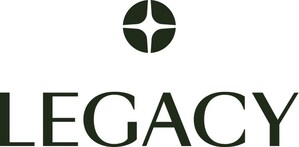Rebound seen in top-grossing movies from Warner Bros., Fox, Sony and others
WASHINGTON, April 9, 2013 /PRNewswire-USNewswire/ -- A year after the U.S. Surgeon General announced that watching movies with characters who smoke causes kids to start smoking, new data show that smoking imagery has markedly increased in the movies that kids see most. Tobacco incidents in youth-rated films doubled between 2010 and 2012, returning to levels of a decade ago. Because tobacco remains the leading cause of preventable death in the United States and large-scale studies demonstrate that movies with smoking increases youth smoking, the rebound represents a set-back for national youth tobacco prevention goals.
(Logo: http://photos.prnewswire.com/prnh/20101101/DC86294LOGO)
According to a new report funded by Legacy, half of 2012's youth-rated movies, delivered an estimated 14.8 billion tobacco impressions to theater audiences, a 169 percent increase from 2010. (Impressions are tobacco incidents multiplied by number of tickets sold per film.) The report was published by the University of California San Francisco and Thumbs Up! Thumbs Down!, a project of Breathe California of Sacramento-Emigrant Trails and forms the basis for the information the CDC reports in a new "fact sheet" on its website.
"Movies may be more powerful than traditional tobacco ads," said Cheryl G. Healton, DrPH, President and CEO of Legacy. "We know that the more smoking that youth see in movies, the more likely they are to smoke. This explosion in on-screen smoking puts hundreds of thousands of young Americans at risk of addiction, disease and premature death."
The 2012 Surgeon General's report, Preventing Tobacco Use Among Youth and Youth Adults, found that the US film industry has a long, documented history of collaborating with the US tobacco industry to promote smoking and its brands. It has been known for years that on-screen smoking harms their young audience, but the industry as a whole has not adopted evidence-based, industry-wide policies recommended by public health authorities and state attorneys general.
Three major studios had eliminated almost all smoking in their G/PG/PG-13 movies in 2010 but, by 2012, one of the companies (Time Warner's Warner Bros.) once again ranked number 1 in tobacco incidents, followed by Sony and then by News Corp.'s 20th Century Fox . Viacom (Paramount), Disney and Comcast (Universal) had less smoking in their 2012 youth-rated movies than in 2011.
"Increases in smoking imagery in the movies are discouraging," said CDC Director Tom Frieden, MD, MPH. "Every day in the United States approximately 3,800 youth under 18 smoke their first cigarette, and approximately 1,000 become daily cigarette smokers. Reducing smoking and tobacco use in youth-oriented movies will help save lives, money, and years of suffering from completely preventable smoking-related chronic diseases."
The U.S. Centers for Disease Control and Prevention (CDC) has listed on-screen smoking as a factor in youth smoking initiation since 2002. In 2012, the CDC announced that it would track future tobacco incidents in motion pictures as a "core" public health indicator. The 2012 data are now posted on the CDC's website at www.cdc.gov/tobacco/smoking-in-movies.
Films with high levels of smoking include The Hobbit (Time Warner), Lincoln (Disney), Taken 2 (News Corp.), Skyfall (Sony) and Men in Black 3 (Sony).
Based on large-scale, rigorous studies, the latest estimate is that 37% of new young U.S. smokers are recruited to smoke by their exposure to movie smoking: about 800,000 current smokers ages 12-17. Of these (under current assumptions), up to 250,000 will ultimately die from tobacco-induced diseases and may incur medical costs of $18 billion through the age of 50 (discounted present value).
Among the results: the number of tobacco incidents in youth-rated movies (595 to 1,178; 98.0% increase) and the average number of incidents per youth-rated movie (6.8 to 13.5; 100.3 increase) doubled from 2010 — the historic low point — to 2012. (Incidents per movie controls for fluctuations in the number of top-grossing movies year to year.)
Health experts say the US movie industry should adopt voluntary, evidence-based policies that would reduce kids' exposure substantially and permanently. These include assigning an R-rating to future movies with tobacco imagery or references, with exceptions for portrayals of actual people who actually used tobacco (as in documentaries or biographical dramas) or depictions of tobacco's real health effects; this would create a market incentive for producers to calibrate smoking as they now routinely calibrate other content for a desired rating. Other solutions are: strong anti-tobacco spots before all movies with tobacco, in all media; producers' certifying no tobacco payoffs; ending tobacco brand display on screen; and making productions with tobacco imagery ineligible for public subsidies. Initiatives are supported by the World Health Organization, American Medical Association, American Academy of Pediatrics, American Heart Association, Legacy, American Lung Association, Americans for Nonsmokers' Rights, American Public Health Association, Breathe California, Campaign for Tobacco-Free Kids, Los Angeles County Department of Public Health, New York State Department of Health, New York State PTA, and many others. The policy recommendations have been cited in CDC reports as well as by the US Surgeon General.
"The solutions would level the playing field for companies and studios that compete to release the years' top-grossing films," said Stanton A. Glantz, PhD, Professor of Medicine at UCSF and Director of the Smoke Free Movies Project. "A forward-looking, industry-wide standard would save thousands of lives worldwide and leave the studios free to make any movies they want, smoking or smoke-free, within the rating system they run themselves," he added.
The state attorneys general, whose 1998 Master Settlement Agreement with the domestic tobacco companies prohibited paid tobacco product placement in entertainment accessible to youth, are also closely monitoring developments. In the spring of 2012, two-thirds of the nation's attorneys general urged the parent companies of several major studios to take immediate action and reminded them that they were knowingly harming children each time they released a movie with smoking. Few companies bothered to reply, and even those that did continue to include smoking in their youth-rated movies.
"Hollywood could be a powerful ally in the effort to prevent youth smoking," said South Dakota Attorney General Marty Jackley, co-chair of the Tobacco Advisory Committee for the National Association of Attorneys General (NAAG).
"Nearly 10,000 Missourians die every year from smoking-related illnesses," said Missouri Attorney General Chris Koster, co-chair of the Tobacco Advisory Committee for the National Association of Attorneys General (NAAG). "I hope the studios will take steps to make sure young people aren't influenced to start smoking because of what they see in their films."
LEGACY
Legacy helps people live longer, healthier lives by building a world where young people reject tobacco and anyone can quit. Legacy's proven-effective and nationally recognized public education programs include truth®, the national youth smoking prevention campaign that has been cited as contributing to significant declines in youth smoking; EX®, an innovative public health program designed to speak to smokers in their own language and change the way they approach quitting; and research initiatives exploring the causes, consequences and approaches to reducing tobacco use. Located in Washington, D.C., the foundation was created as a result of the November 1998 Master Settlement Agreement (MSA) reached between attorneys general from 46 states, five U.S. territories and the tobacco industry. To learn more about Legacy's life-saving programs, visit LegacyForHealth.org.
Follow us on Twitter @legacyforhealth and Facebook www.Facebook.com/Legacy.
SOURCE Legacy
WANT YOUR COMPANY'S NEWS FEATURED ON PRNEWSWIRE.COM?
Newsrooms &
Influencers
Digital Media
Outlets
Journalists
Opted In





Share this article